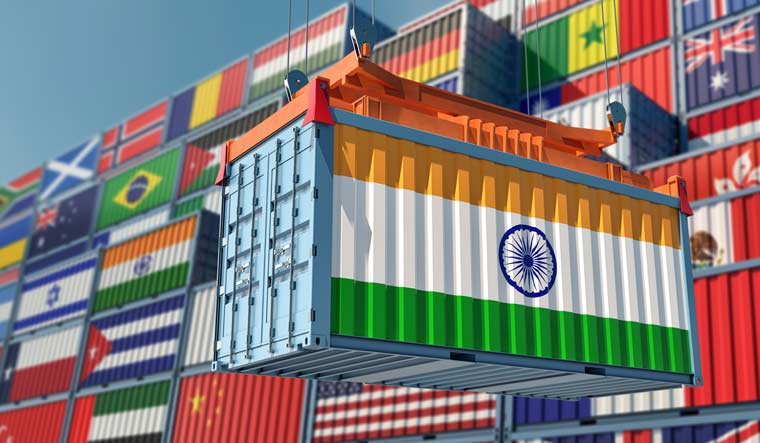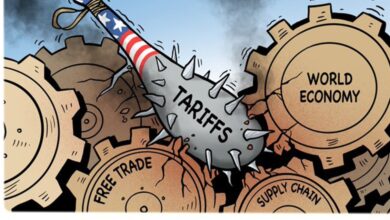India’s engineering exports see mixed fortunes in June 2023; trade with Russia surges: EEPC

India’s engineering exports see mixed fortunes in June 2023; trade with Russia surges: EEPC
In June 2023, India’s engineering exports to major markets like the United States, the European Union (EU), and China experienced a decline. This decline was attributed to the challenging global trade environment. However, during the same period, India’s shipments to other regions showed positive growth.
Specifically, the country’s engineering exports to West Asia and North Africa (WANA), North East Asia, and Commonwealth of Independent States (CIS) countries demonstrated positive trends.

The Engineering Exports Promotion Council of India (EEPC) reported these findings, indicating that while India faced difficulties in some key markets, it managed to capitalize on opportunities in other regions, leading to positive growth in those areas.
The global trade landscape is complex and can be influenced by various factors such as geopolitical tensions, economic conditions, and policy changes in different regions. These factors can impact a country’s trade performance, leading to fluctuations in export patterns over time.
In June 2023, India’s engineering exports experienced a significant decline for the third consecutive month, with a year-on-year drop of 11 per cent amounting to USD 8.53 billion. The main contributors to this decline were the United States, the European Union (EU), and China, which saw sharp reductions in imports of engineering goods from India.
Exports to the United States fell by 12.5 per cent, reaching USD 1.45 billion. Similarly, exports to the EU experienced a substantial decline of 16.2 per cent, amounting to USD 1.51 billion. The exports to China, one of India’s major trading partners, suffered the most significant decline of 20 per cent, with the value of exports dropping to USD 184 million.
Despite these challenges, there was a notable positive development in India’s engineering exports, particularly in its exports to Russia. Exports to Russia witnessed an impressive growth, almost tripling in value, reaching a substantial USD 116.9 million in June 2023. This sharp increase in exports to Russia helped offset some of the losses faced in other major markets.
The fluctuations in engineering exports highlight the volatility of global trade and the importance of diversifying export markets for countries like India to mitigate risks associated with dependence on a few major trading partners.
During the April-June period of the current fiscal year, India’s exports to Russia experienced a remarkable four-fold surge, totaling USD 337.4 million. This surge was in comparison to the same period of the previous fiscal year when exports to Russia were valued at USD 89.7 million. The significant increase in exports to Russia highlights the strengthening trade relations between the two countries during this time frame.
Experts have attributed the downturn in India’s engineering exports, particularly in the metal sector, to weakening global demand. The steel industry played a significant role in this decline, with reduced demand globally. The slowdown in global steel demand was further exacerbated by slower offtake from China’s construction sector. As China is a major consumer of steel, any slowdown in its construction industry can have a significant impact on global steel demand and prices.
The weakening global trade environment and fluctuations in demand from major economies like the United States, the European Union, and China also played a role in the overall decline in India’s engineering exports during this period. However, the surge in exports to Russia indicates that India was able to find opportunities in other markets to compensate for the losses in its traditional trading partners.
In such a dynamic and interconnected global trade landscape, fluctuations in demand and supply from various countries and industries can significantly influence a country’s export performance. Policymakers and businesses need to remain vigilant and adapt to changing market conditions to stay competitive in international trade.
According to Arun Kumar Garodia, the Chairman of EEPC India, the most significant contributor to the decline in India’s engineering exports has been the metal sector, particularly iron and steel. The decline in this sector is a result of weakening global demand for steel products. Moreover, recent news indicates that global steel demand has further weakened due to slower offtake from China’s construction sector, which is a major consumer of steel.
However, when excluding the export of iron and steel from the engineering exports data, the overall decline in June 2023 was lower at 6.95 per cent year-on-year. This suggests that other segments within the engineering exports category may have fared relatively better during this period.
The slowdown in the metal sector is reflective of the challenges faced by industries that heavily rely on global demand. Economic conditions, geopolitical factors, and changes in trade policies can influence the demand for engineering goods in international markets, leading to fluctuations in export performance.
Diversification of export products and markets remains crucial for countries like India to mitigate risks associated with dependency on specific sectors and regions. Policymakers and businesses need to continuously assess market dynamics and adapt to changing conditions to maintain a competitive edge in the global trade landscape.
In June 2023, there was a mixed performance in India’s engineering exports across different segments. Out of the total 34 engineering segments, 17 segments recorded positive year-on-year growth, while the other 17 segments experienced negative growth in exports.
Several major engineering products faced declines in their exports during June 2023 compared to the same period in the previous year. These products include:
1. Iron and Steel: A significant decline was observed in the export of iron and steel, which is a crucial sector within the engineering industry.
2. Most Non-Ferrous Products (excluding copper, nickel, and lead products): Non-ferrous metals are metals that do not contain iron. While copper, nickel, and lead products saw positive growth, other non-ferrous products experienced declines in exports.
3. Industrial Machinery and Parts: Export of industrial machinery and parts faced a downturn during this period.
4. Two- and Three-Wheelers: The export of two- and three-wheelers, which are important transportation products, witnessed negative growth.
5. Auto Components and Parts: The export of auto components and parts, which are essential for the automotive industry, declined.
6. Auto Tyres: The export of auto tyres also experienced a decrease during this period.
7. Railway Transport: Exports related to railway transport faced a decline.
8. Hand Tools: The export of hand tools, which are used in various industries, also recorded negative growth.
The decline in these segments reflects the challenges faced by specific industries within the engineering sector. The reasons for these declines could vary and might be influenced by factors such as changes in global demand, economic conditions in key markets, competition from other countries, and policy changes affecting international trade.
On the positive side, the growth in other segments indicates that certain industries managed to capitalize on opportunities in international markets, despite the overall challenging trade environment. Policymakers and businesses need to closely monitor the performance of different segments and take appropriate measures to support and enhance the competitiveness of the engineering exports sector.




